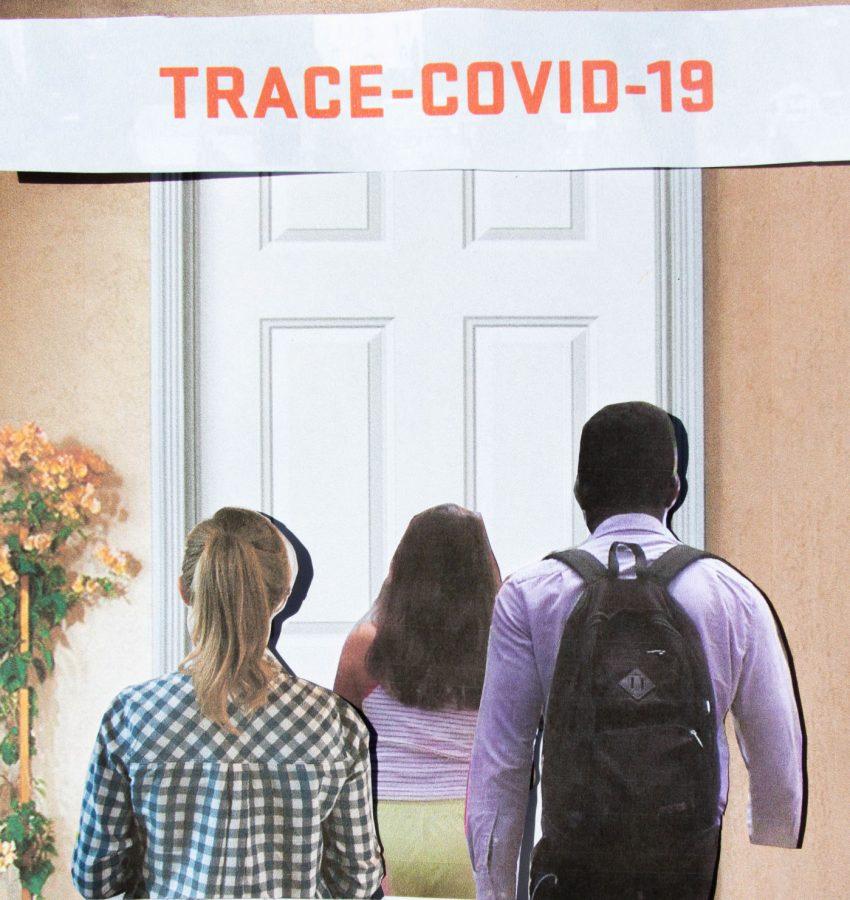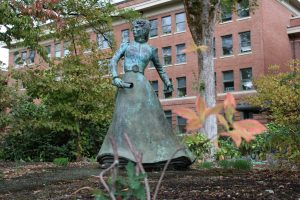The TRACE Project
June 10, 2020
So, we’ve all been told to wear masks and stay six feet away from each other to limit the spread of COVID-19 as well as protect our own health. The usual. But in a broader context, what does the prevalence of the virus actually look like in the Corvallis and Bend community? From this, what are the risks imposed?
The Team-based Rapid Assessment of Community-level coronavirus Epidemics, or TRACE study, aims to answer those questions. A team composed of health professionals and Oregon State University faculty and students, the project is funded by OSU and the David and Lucile Packard Foundation.
According to Jeffrey Bethel, the Project co-leader and an Associate Professor in the OSU College of Public Health and Human Sciences, after obtaining informed consent, participants are invited to partake in the study, in which they collect their own nasal swab specimen that goes to the lab for testing. By randomly selecting thirty neighborhoods and choosing a random sample from within each of those census blocks, a random sample of households can be identified.
Of course, if symptoms arise, many coronavirus cases are obvious enough. But those who are asymptomatic also need to be taken into account, and the TRACE project attempts to do just that.
“Tracking the prevalence of the virus, especially among asymptomatic people is critical to protecting the most vulnerable members of our society,” Brett Tyler said, director of the Center for Genome Research and Biocomputing.
Well, what are the results? Bethel stated that data collection from the first weekend indicated a prevalence of 2 per 1000 while the second weekend showed a prevalence of 1 per 1000. It should be noted that these are separate estimates. Although the prevalence is relatively low, caution still needs to be taken in order to prevent it from escalating.
“Our interpretation of that [the results] is while it’s relatively low prevalence at those times in Corvallis, it still tells us that the virus is out there, and the cases that are out there can easily form the basis for increased transmission,” Bethel said.
In addition, let us not forget that workers and researchers have contributed significantly to the undertakings of this project, even if it means putting themselves at risk by handing out test kits from door-to-door. Their intrinsic motivation is profound for the service that they do. Take Sarah Ingwersen for example. She is a Master of Public Health graduate student in her second year who is a student worker for the TRACE project.
“As a public health student, this is a unique and opportune time to see how public health professionals respond to emergencies,” Ingwersen said. “I have been grateful for the opportunity to learn more about disaster response and community outreach. My favorite part of this job is either working with this great team of students and community health workers, or hearing from community members how excited they are about our project, and how proud they are of OSU for sponsoring this research.”
Similarly, Bethel also gains a sense of fulfillment as a result of helping to take on the project.
“My motivation was that this is a way to contribute to helping to control this pandemic,” Bethel said. “I really saw that my skills were a fit for this type of work. My background in infectious disease epidemiology and disaster related research combined these areas of expertise into being able to contribute significantly to this project.”
Through increasing awareness about the prevalence of COVID-19 in the Corvallis community, hopes are that the results will be used so that appropriate policies can be implemented to best combat coronavirus. One of the TRACE study’s crucial collaborators in this regard has been the Benton County Department. The Deschutes County Health Services will also come into play as the project expands into Bend.
“Hopefully these numbers are utilized by government officials and public health officials to make informed decisions when it comes to allocating resources, reopening the city or state, and ensuring the health of our community,” Ingwersen said.
Photos by Kyle Switzer






